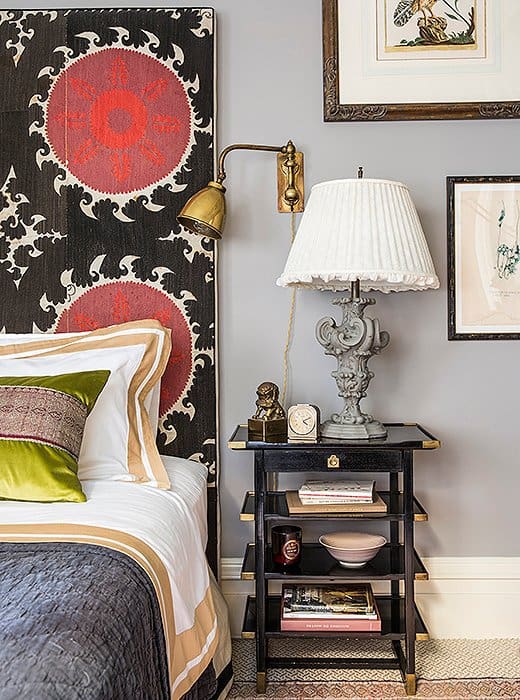What is suzani?
Suzani is a form of embroidered art widely practiced in Central Asian countries like Uzbekistan and Tadjikistan. The term derives from a Farsi word “suzan” which translates as “a needle”. Historically girls learnt how to embroider just as soon as they could hold a needle. This needlework was extremely important in the household because interior decoration back in those days was all about textiles. Carpets, cushions, bedspreads, teapot covers, wall hangings – these everyday items were made by hand and were ways of expressing one’s creativity.
Determining Age of Central Asian textiles
Estimating age of suzani fabric is just a matter of a wild guess. With the arrival of Bolsheviks people unsatisfied with a new regime fled their country. This resulted in a natural “migration” of suzani textiles from Central Asia. These days antique suzani displayed in European and American museums are often those textiles, which were taken out of Central Asia in the beginning of the 20th century.

Sentimental value embedded in suzani textile
Girls learned to sew and embroider starting from an early age. Embroideries were done by girls with a help of female members of the family for their dowries.
Embroidered objects accompanied a girl to her married life and were pieces of her family surrounding her in her new home. Most extraordinary pieces were passed from one generation to the next. These days some of those pieces attract textile lovers in museums around the world.
Choosing a bride by her embroidery (well, parly)
Back in the days marriages were widely a matter of a family arrangement. When choosing a bride, a groom-to-be and his family could not see or talk to a girl directly. However, when they came to visit girls’ parents in hopes to arrange a marriage, they could see the girls’ work around the house. A suzani wall hanging here, a tablecloth with exquisite needlework there, a teapot cover with exceptional embroidered details on a table… By inspecting the quality of these suzani fabrics, the coordination of colors and a precision of embroidery they could develop an idea about a girl, her taste, her spirit, her diligence and her personality.
Suzani in Interior Decoration
These days hand embroidered suzanies are popular interior decoration objects. They are key decor pieces in boho and eclectic interiors and often times work as a main decorative object of the room. One beautiful piece of embroidery can absolutely transform a room into a unique beautifully decorated space. Uzbek suzanies placed on an accent wall can totally transform an office space. Those walls will probably be the most popular walls in the entire organization.
For dining room interiors we have a whole collection of table décor, which includes both hand and machine embroidered table runners and table clothes. These are luxurious statement pieces for creative festive dining ambiance.
Caring for your Uzbek embroidery
You may hear that some suzani fabric is washable but in most cases hand embroidered textiles require a professional dry clean. If the base fabric of embroidery is silk, then dry clean will be the best way to care for the fabric.
Presenting Uzbek textile heritage in our online ikat store
Here at UzbekAlive we offer authentic hand embroidered works of art. These products are presented this category as well as in Table Decor category. In addition, we offer hand dyed and handloom woven ikat fabric for sale from Margilan. Our silk scarves collection is made of 100% pure handwoven silk.






